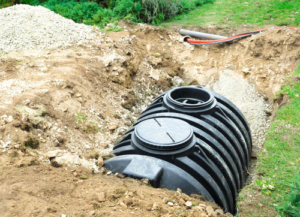Electricians can specialize in a number of different areas. They perform inspections, repairs and install new wiring and equipment.
Many states require electricians to have a certain amount of practical experience before becoming certified. To gain this experience, aspiring electricians often complete apprenticeship programs with unions or companies. These programs combine on-the-job training with classroom instruction. Contact Old Town Electric for professional help.
The education and training requirements for becoming an electrician vary by state, but most require a high school diploma or equivalent. Most electricians, however, learn on the job, often as part of an apprenticeship program that lasts four to five years. The program typically combines on-the-job training with classroom setting instruction. Some vocational schools and community colleges also offer certificate programs in electrical technology.
Regardless of the educational path, an electrician will need to pass a state licensing exam in order to work on the job. This exam will test knowledge of electrical codes and safety protocols. It will also cover topics like working with energized equipment and how to spot hazards and prevent injuries to workers.
Electricians are responsible for installing, maintaining and repairing electrical power, communications, lighting, and control systems in residential homes, commercial buildings, and industrial facilities. They also ensure that the electrical systems comply with local and national codes, and follow proper safety protocols to reduce risks such as fires and shocks.
As electricians gain experience, they may choose to specialise in a particular facet of the industry. This can open up new career opportunities and increase earning potential. It can also allow them to work with more specialised and expensive pieces of equipment.
While the specific job duties of electricians vary by specialisation, they all focus on keeping electrical wiring systems up to standard in residential, commercial, and industrial settings. This includes installing, testing and repairing electrical equipment and appliances, such as fuses, circuit breakers, and wires.
The specific work environment for electricians depends on the specialisation and may involve working in construction sites, offices, or warehouses. These jobs are typically physically demanding and require the use of tools like ladders, scaffolding, and handrails. They can also be very hazardous, as they work with electricity and other dangerous materials. As a result, electricians need to wear personal protective equipment (PPE) like rubber-insulated gloves and sleeves, hard hats, and safety shoes.
Many electricians eventually become their own bosses and start independent electrical contracting businesses. This can be a lucrative and rewarding option, but it requires a strong business mind in addition to technical skills. As a result, it’s important for any prospective electrician to take courses that teach the basics of entrepreneurship and management.
Licensing and Certification
There are a number of requirements for becoming a licensed electrician, depending on where you live. Some states require that aspiring electricians have an apprentice or trainee program before applying for a license, while others only require that the individual pass an exam. It’s also common for electricians to pursue additional certifications, which can help open up new job opportunities and impress clients.
Many apprentices choose to get their licensing through an apprenticeship with a union. This means that they can earn a living while working on projects and taking classes to learn more about the trade. This is a great way to get hands-on experience in the field, and it typically takes around 8,000 hours of supervised work to become a journeyman electrician.
In order to get a full master electrician license, you will need to complete a series of steps, including passing an exam and having your background checked. The exact requirements vary by state, but you will likely need to provide proof of your previous employment as well as submit a criminal history report. You will also need to show that your business carries general liability and workers’ compensation insurance policies.
Once you’ve completed your apprenticeship and passed your license exams, you can begin to take on new projects. However, you may still need to work under the supervision of a journeyman electrician on larger construction jobs. It’s also common for electricians and other tradesmen to pursue various industry certifications, which can increase their chances of getting new job opportunities. Some of these certifications are offered through the Occupational Safety and Health Administration, while others are offered by tool and equipment manufacturers.
It’s important for every electrician to maintain their professional licenses and certifications, as this can protect them from claims made by clients. For example, if you damage a client’s property while working on an electrical project, you could be sued for damages. A general liability policy can cover your expenses if this happens, as well as any settlements or judgments awarded against you. In addition, if you ever make a mistake that results in financial loss for a client, errors and omissions (E&O) insurance can pay for any resulting damages.
Job Duties
Electricians install, repair and maintain electrical wiring, fixtures and equipment. They work on a variety of projects, including residential, commercial and industrial wiring. They also inspect power lines and machines for safety, report incidents and hazards, and ensure compliance with building and safety codes. Many electricians find the career rewarding, especially because it offers a good salary compared to other construction jobs.
Some electricians are self-employed, and others work for large companies or utilities. They may perform their duties in teams, but most often they work alone or with a supervisor. The type of supervision they receive depends on their level of experience and the complexity of the project.
Typical electrician job duties include analyzing blueprints to determine the layout of electrical circuits and equipment, reading and following technical drawings and diagrams to understand the work instructions, and using testing devices to test continuity and compatibility of the wiring and equipment. They use a wide range of tools and equipment, such as power construction and hand tools, computer and word processing programs and CAD software to develop and produce electrical schematics.
Other responsibilities include rigging for the transportation of motors and motor control equipment after their removal and installation, and performing a variety of maintenance tasks such as cleaning, lubricating and testing components and systems. They also monitor and record power consumption, and make adjustments to conserve energy. In addition, they maintain a working knowledge of the Western Area Power Administration and District high voltage switching orders and related electrical safety standards.
Some electricians also provide consultation services, assisting engineers and architects to design electrical systems for new buildings or other structures before construction begins. Others collaborate with other construction specialists, such as elevator installers or heating and air conditioning workers, to install or repair electrical power and wiring for those structures. Experienced electricians also help train new workers by directing them on the job. They may also participate in ongoing training to keep up with industry standards and best practices. This can result in improved efficiency and safety, as well as a broader range of capabilities and expertise.
Employment Opportunities
Like many trades, electrician positions are high-demand with a positive outlook. Demand for electricians will continue as new construction and energy infrastructure continues to grow, and the need for upkeep on older electrical systems is expected to increase as well. Additionally, advances in solar and wind power will require electricians to work on the connection of those renewable sources to homes and power grids.
Electricians are ranked as one of the highest-paying jobs that do not require a four-year degree and instead can be obtained through a combination of vocational school and on-the-job experience. They receive a salary of between $40,000 and $87,000, which is higher than most other skilled trades and professions.
The job can be highly rewarding, but it can also be demanding and stressful. It requires physical strength to move equipment and components, as well as the ability to think on your feet and problem-solve. It can also be very travel-heavy, as electricians are often needed at job sites that are far away from their homes and may need to commute a significant distance on a daily basis.
There are several different specializations available for electricians to focus on, including: alarm and security technicians, telecommunications technicians, residential wiring specialists, and industrial control system specialists. Some electricians can also choose to become senior electrical estimators, a role that involves meticulously calculating the materials, labor, and time required for projects.
Those interested in becoming electricians can start this career by obtaining a high school diploma, then enrolling in a vocational school or an apprenticeship program that will provide theory instructions and intensive on-the-job training. Many large manufacturers and industrial companies offer their employees apprenticeship programs and tuition reimbursement for classes.
While most electricians are employed as journey workers, those who wish to advance their careers can pursue the additional qualifications of master electrician or electrical engineer. Electricians can also seek out opportunities to manage their own businesses or to become self-employed as independent contractors. Other options include working as an industrial maintenance technician, a position that involves completing facility repairs and commercial or industrial machinery repair for organizations.
Electricians can specialize in a number of different areas. They perform inspections, repairs and install new wiring and equipment.
Many states require electricians to have a certain amount of practical experience before becoming certified. To gain this experience, aspiring electricians often complete apprenticeship programs with unions or companies. These programs combine on-the-job training with classroom instruction. Contact Old Town Electric for professional help.
The education and training requirements for becoming an electrician vary by state, but most require a high school diploma or equivalent. Most electricians, however, learn on the job, often as part of an apprenticeship program that lasts four to five years. The program typically combines on-the-job training with classroom setting instruction. Some vocational schools and community colleges also offer certificate programs in electrical technology.
Regardless of the educational path, an electrician will need to pass a state licensing exam in order to work on the job. This exam will test knowledge of electrical codes and safety protocols. It will also cover topics like working with energized equipment and how to spot hazards and prevent injuries to workers.
Electricians are responsible for installing, maintaining and repairing electrical power, communications, lighting, and control systems in residential homes, commercial buildings, and industrial facilities. They also ensure that the electrical systems comply with local and national codes, and follow proper safety protocols to reduce risks such as fires and shocks.
As electricians gain experience, they may choose to specialise in a particular facet of the industry. This can open up new career opportunities and increase earning potential. It can also allow them to work with more specialised and expensive pieces of equipment.
While the specific job duties of electricians vary by specialisation, they all focus on keeping electrical wiring systems up to standard in residential, commercial, and industrial settings. This includes installing, testing and repairing electrical equipment and appliances, such as fuses, circuit breakers, and wires.
The specific work environment for electricians depends on the specialisation and may involve working in construction sites, offices, or warehouses. These jobs are typically physically demanding and require the use of tools like ladders, scaffolding, and handrails. They can also be very hazardous, as they work with electricity and other dangerous materials. As a result, electricians need to wear personal protective equipment (PPE) like rubber-insulated gloves and sleeves, hard hats, and safety shoes.
Many electricians eventually become their own bosses and start independent electrical contracting businesses. This can be a lucrative and rewarding option, but it requires a strong business mind in addition to technical skills. As a result, it’s important for any prospective electrician to take courses that teach the basics of entrepreneurship and management.
Licensing and Certification
There are a number of requirements for becoming a licensed electrician, depending on where you live. Some states require that aspiring electricians have an apprentice or trainee program before applying for a license, while others only require that the individual pass an exam. It’s also common for electricians to pursue additional certifications, which can help open up new job opportunities and impress clients.
Many apprentices choose to get their licensing through an apprenticeship with a union. This means that they can earn a living while working on projects and taking classes to learn more about the trade. This is a great way to get hands-on experience in the field, and it typically takes around 8,000 hours of supervised work to become a journeyman electrician.
In order to get a full master electrician license, you will need to complete a series of steps, including passing an exam and having your background checked. The exact requirements vary by state, but you will likely need to provide proof of your previous employment as well as submit a criminal history report. You will also need to show that your business carries general liability and workers’ compensation insurance policies.
Once you’ve completed your apprenticeship and passed your license exams, you can begin to take on new projects. However, you may still need to work under the supervision of a journeyman electrician on larger construction jobs. It’s also common for electricians and other tradesmen to pursue various industry certifications, which can increase their chances of getting new job opportunities. Some of these certifications are offered through the Occupational Safety and Health Administration, while others are offered by tool and equipment manufacturers.
It’s important for every electrician to maintain their professional licenses and certifications, as this can protect them from claims made by clients. For example, if you damage a client’s property while working on an electrical project, you could be sued for damages. A general liability policy can cover your expenses if this happens, as well as any settlements or judgments awarded against you. In addition, if you ever make a mistake that results in financial loss for a client, errors and omissions (E&O) insurance can pay for any resulting damages.
Job Duties
Electricians install, repair and maintain electrical wiring, fixtures and equipment. They work on a variety of projects, including residential, commercial and industrial wiring. They also inspect power lines and machines for safety, report incidents and hazards, and ensure compliance with building and safety codes. Many electricians find the career rewarding, especially because it offers a good salary compared to other construction jobs.
Some electricians are self-employed, and others work for large companies or utilities. They may perform their duties in teams, but most often they work alone or with a supervisor. The type of supervision they receive depends on their level of experience and the complexity of the project.
Typical electrician job duties include analyzing blueprints to determine the layout of electrical circuits and equipment, reading and following technical drawings and diagrams to understand the work instructions, and using testing devices to test continuity and compatibility of the wiring and equipment. They use a wide range of tools and equipment, such as power construction and hand tools, computer and word processing programs and CAD software to develop and produce electrical schematics.
Other responsibilities include rigging for the transportation of motors and motor control equipment after their removal and installation, and performing a variety of maintenance tasks such as cleaning, lubricating and testing components and systems. They also monitor and record power consumption, and make adjustments to conserve energy. In addition, they maintain a working knowledge of the Western Area Power Administration and District high voltage switching orders and related electrical safety standards.
Some electricians also provide consultation services, assisting engineers and architects to design electrical systems for new buildings or other structures before construction begins. Others collaborate with other construction specialists, such as elevator installers or heating and air conditioning workers, to install or repair electrical power and wiring for those structures. Experienced electricians also help train new workers by directing them on the job. They may also participate in ongoing training to keep up with industry standards and best practices. This can result in improved efficiency and safety, as well as a broader range of capabilities and expertise.
Employment Opportunities
Like many trades, electrician positions are high-demand with a positive outlook. Demand for electricians will continue as new construction and energy infrastructure continues to grow, and the need for upkeep on older electrical systems is expected to increase as well. Additionally, advances in solar and wind power will require electricians to work on the connection of those renewable sources to homes and power grids.
Electricians are ranked as one of the highest-paying jobs that do not require a four-year degree and instead can be obtained through a combination of vocational school and on-the-job experience. They receive a salary of between $40,000 and $87,000, which is higher than most other skilled trades and professions.
The job can be highly rewarding, but it can also be demanding and stressful. It requires physical strength to move equipment and components, as well as the ability to think on your feet and problem-solve. It can also be very travel-heavy, as electricians are often needed at job sites that are far away from their homes and may need to commute a significant distance on a daily basis.
There are several different specializations available for electricians to focus on, including: alarm and security technicians, telecommunications technicians, residential wiring specialists, and industrial control system specialists. Some electricians can also choose to become senior electrical estimators, a role that involves meticulously calculating the materials, labor, and time required for projects.
Those interested in becoming electricians can start this career by obtaining a high school diploma, then enrolling in a vocational school or an apprenticeship program that will provide theory instructions and intensive on-the-job training. Many large manufacturers and industrial companies offer their employees apprenticeship programs and tuition reimbursement for classes.
While most electricians are employed as journey workers, those who wish to advance their careers can pursue the additional qualifications of master electrician or electrical engineer. Electricians can also seek out opportunities to manage their own businesses or to become self-employed as independent contractors. Other options include working as an industrial maintenance technician, a position that involves completing facility repairs and commercial or industrial machinery repair for organizations.









